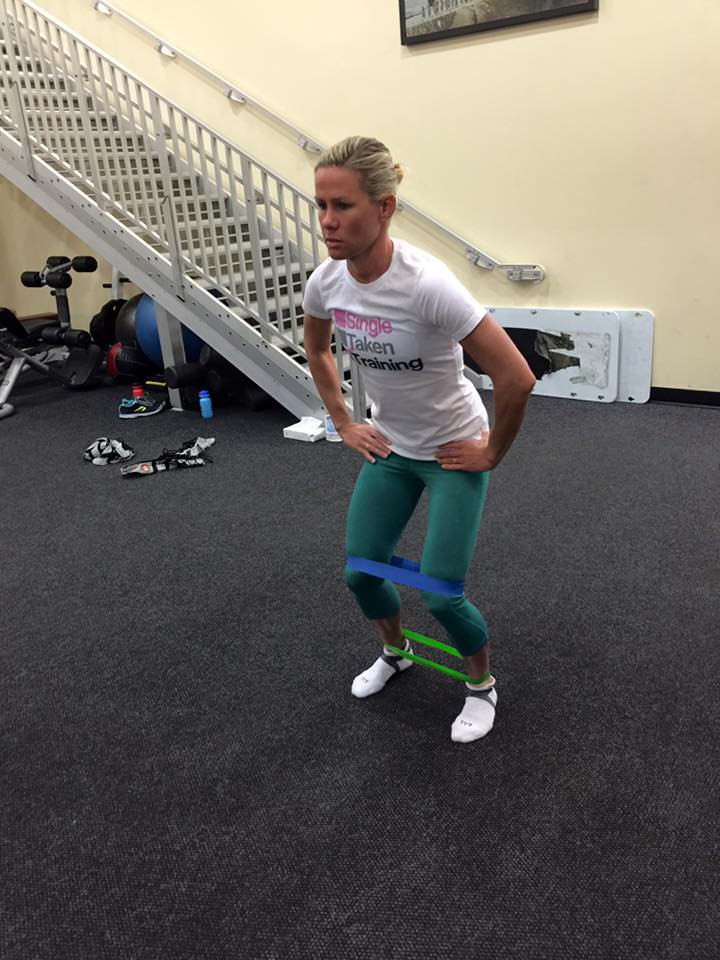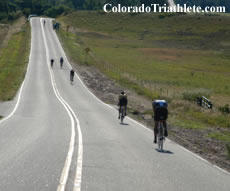As races become more competitive and triathletes look to improve their times, simply swimming, biking, and running is no longer enough for both pro and age-group athletes alike. Many of the triathletes in Boulder look to trainer, and IRONMAN 70.3 World Championship qualifier, Amy Quirion to improve their overall strength, agility and mobility—all while staying injury-free. Find out how Quirion continues to help triathletes improve with her one-of-a-kind training program and what she feels every kind of athlete needs to be working on to maximize their personal success.

What’s the training system, ECFIT, that you use with your athletes?
The program, ECFIT, was designed by Rally Sport owner, trainer, and triathlete, Erin Carson. I work with Erin to facilitate the program with all of our endurance athletes, cyclists, triathletes, and runners. I mostly work with athletes, specifically Julie Diben’s Crew and we just go through phases, depending on where they are in their training and racing. Throughout their season we build them up to certain races and will go through some strength, mobility, and stability as well as add in agility and power as we get closer to their races.
What do you mainly focus on with athletes in the ECFIT training system?
Depending on where the athletes are in their training, we focus more on the mobility side of things. We’re always looking at movement first. Before anybody starts working in the gym, we take them through a series of movements. We know we need to spend more time on things like opening up their hips and activating the posterior chain because that becomes tired when we’re sitting on bikes for a long period of time. That opening sequence of movements usually dictates what we do with them and then we go through mobility, activation, stability, strength, and, finally, power and agility. We use all of these aspects to design their specific programs.
What are the benefits for women who go through the ECFIT training?
For all women, whether you are an athlete or not, the benefits are going to be huge in helping prevent injury, but also with bone density, growth hormones, and the responses we have. Whether you are doing triathlon or just trying to stay healthy, there are huge benefits to lifting weights in general. With our athletes, we are trying to prevent injury and keep their bodies balanced. We’re such linear athletes and constantly moving forward, so we have to couple that with exercises that help keep us balanced.
What do you mean, specifically, when you are talking about mobility and activation in training?
Mobility would be quality movement, like making sure that our hips, ankles, and thoracic spine are all moving really well. Activation would be engaging the glutes, core, and posterior chain, which is the whole backside of the body. For our strength, we do more pulling than pushing because we are constantly in a forward, flexed position and we negate that by doing more pulling. For agility and power, we’ll use exercise balls, agility ladders, and plyos, like box jumps for explosive work.
What is your advice when it comes to stretching both pre- and post-training in the gym?
Depending on when an athlete comes in for their training, they usually have a training session afterwards. We don’t do any long holds or big range of motion work. We don’t do much static stretching, especially if an athlete has to go do a workout after our training. We do dynamic stretching and more movement-based work, exercises using their full range of motion. That’s our mobility style, opening up the hip flexors and lengthening the front side of the body because that tends to get shortened. Things like half-kneeling stretches are great to get your hips opened up. Our forms of stretching also help them relax their nervous system, which is beneficial, especially if they are coming off a hard workout.
How does cardiovascular training play into your regime?
Our training is not going to tax an athlete cardiovascularly, that’s not our job. We should send them to their coach feeling good and we should never take away from their training. When they go to their sessions the next day, they should not feel tired from their gym work. It should only help their sessions. Sometimes we’ll do some cardio for a warm-up like box jumps, use an agility ladder, or have them bound up stairs. But it has enough rest in between that it’s not affecting them cardiovascularly. Their warm-ups are mostly movement and activation-based, getting things switched on or off, or whatever they need.







